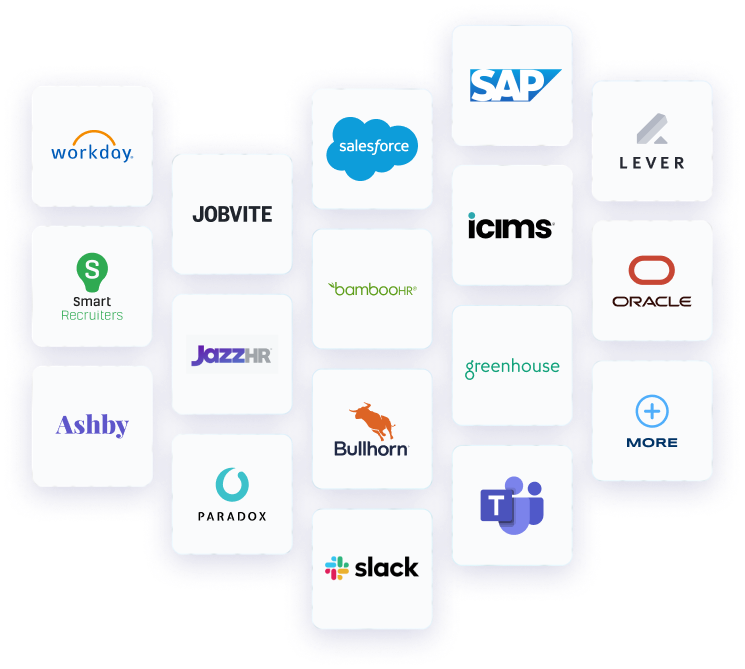

Crosschq Blog
Pass-through Rates and How Hiring Intelligence Can Help

In the U.S., it takes about 40 days to fill a position and just under $5,000 per hire on average.
The longer it takes to find a qualified hire, the higher you can expect those hiring costs to be and the greater your losses from having an extended unfilled position.
If you’re experiencing longer time to fill metrics or lower quality of hires, one relevant metric to assess is your pass-through rate (PTR). Your PTR will tell you how effective your job ads, sourcing, screening, and overall hiring process is at taking candidates through every step of the hiring funnel.
What is a pass-through rate?
PTR is a type of yield ratio that looks at how many candidates make it through your hiring process, from the initial job application to landing a hire. PTR can also tell you the percentage of candidates that make it through each hiring process step. So, you can get the PTR of total applicants (let’s say 100) and candidates you eventually hire (let’s say seven). Your total PTR would be seven percent in this case.
If you’re simply looking at how many candidates complete the application and screening process after applying (let’s say only 40 get through the screening phase), then you would have a 40 percent screening PTR.
What is a good pass-through rate?
Your passthrough rates throughout the hiring funnel can tell you how effective your hiring practices are and where you may have room for improvement. For large companies that require a consistent intake of employees, it makes sense to have a higher overall passthrough rate. In most cases, however, your should aim to lower your passthrough rates, especially toward the end of the hiring process.
Say you’re seeking to hire only one employee. If 20 out of 50 candidates pass through the preselection to the interview phase, that will leave you with a 40 percent pass-through rate. If you could bring that number down to 10 candidates (20 percent PTR), your interviewing panel would only have to interview 10 candidates, saving you time and money.
The aim isn’t to arbitrarily seek an ideal percentage for passthrough rates; it’s to have a system that effectively screens for the best quality of candidates while ensuring your hiring process is efficient and cost-effective. Lower PTR is usually an indication of efficiency and cost-effectiveness. And you can use other tools, like hiring intelligence and quality of hire metrics, to determine how well you’re able to balance quality alongside efficiency.
How do you measure pass-through rate?
There are two ways to measure pass-through rate. The first is the overall pass-through rate, and the second applies to an individual hiring step. To calculate overall PTR, you simply divided your total hires by the total candidates who applied. So if 100 applicants applied, and you hire five of them, you have a 5 percent overall PTR.
If 100 applicants apply, and you reach out to 40 of them for a screening call, you have a 40 percent PTR rate for screening calls. This applies to every step of the hiring funnel.
How hiring intelligence helps your pass-through rate
Hiring intelligence is the use of data and analytics to inform and optimize every step of the hiring process. Because hiring intelligence can help improve the various steps of your hiring process, you can use an analytical approach to inform and improve your PTR.
For example, you might have an efficient PTR that can attract candidates and get them to the interview phase promptly. But if you aren’t yielding quality hires, you may hurt yourself in the long run.
With hiring intelligence, you have the chance to feed your platform with data. Over time it can identify which channels are yielding the best quality candidate and what types of experiences and qualities are indicative of quality applicants. Hiring intelligence platforms, like Crosschq, can identify passive vs. active candidates, provide external recruiters with tools they need to find the right candidate, reduce unconscious bias, and provide you with post-hire evaluation features to track new-hire performance.
With Crosschq, you can improve your PTR and quality of hire with:
- Crosschq’s opt-in network of highly qualified and active candidates
- Time-saving enhanced search capabilities
- Candidate data enriched with soft skills, past education, performance, and more
- 360 reference check reporting that can gather candidate reports within 48 hours
- A 360 platform that reduces overall turnaround time reduction by 85 percent
- Customizable real-time alerts that provide you with the information you need when you need it
Crosschq and your pass-through rate
Crosschq offers several advanced hiring intelligence tools to help you improve your PTR, quality of hire, and other key hiring metrics. You can collect data from your sources, benefit from several pre-hire assessments, track candidates through the hiring funnel, and feed data to your hiring intelligence platform directly from your ATS.
Ge a Crosschq demo to hire better, faster, and more equitably today.
Newsletter Sign Up
by Mark Ko
File Under
Take the Guesswork
Out of Hiring
Schedule a demo now



%20-200x43.png)





